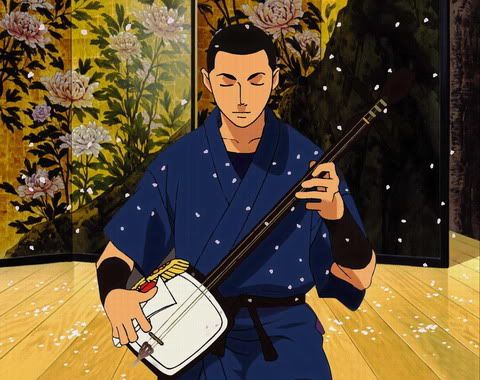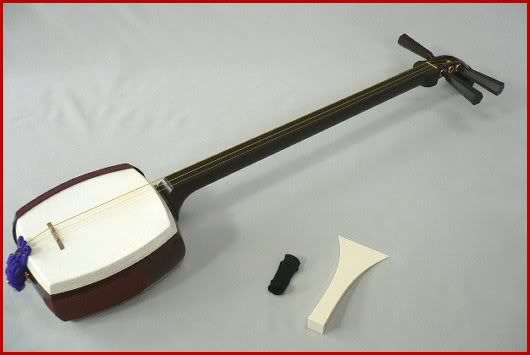I've always thought of shamisen as the Japanese counterpart of the guitar -- but the sound that the shamisen makes is truly unique compared to Western stringed instruments that just gives of a... Eastern flair to it.
The shamisen or samisen (Japanese: 三味線, literally "three flavor strings"), also called sangen (literally "three strings") is a three-stringed musical instrument played with a plectrum/pick called a bachi.
The shamisen's length is similar to a guitars but the neck is much slimmer and it doesn't have frets like guitars do. The body, is drum-like and is a rounded rectangle, the body resembles the body of a banjo, and amplifies the sound of the strings. Shamisens have animal skins wrapped around the body, but in the past, a special type of paper was used. Recently, various plastics are being tested to see if they would work. Traditionally, the strings of the shamisen are made of silk. Recent ones are made with nylon.
In most genres the shamisen is played with a large weighted plectrum called a bachi, which was traditionally made with ivory or tortoise shell but which now is usually wooden, and which is in the shape likened to a ginkgo leaf. The sound of a shamisen is similar in some respects to that of the American banjo, in that the drum-like skin-covered body, known as a dō, amplifies the sound of the strings. As in the clawhammer style of American banjo playing, the bachi is often used to strike both string and skin, creating a highly percussive sound.
In kouta (小唄; literally "short song") and occasionally in other genres the shamisen is plucked with the fingers.
Usually, Shamisen are played for traditional music, but in the current music scene, there are some who use the shamisen and play it differently. The recent popular shamisen players are the Yoshida Brothers. Also, J-rock idol Miyavi has played the shamisen in some occasions. Monkey Majik also has a song called "Change" that features the Yoshida Brothers' shamisen music.
I know of the shamisen as an instrument but never really heard much of shamisen music -- and so I thought that somehow, it wasn't really interesting. I was proved wrong when I heard shamisen music in Monkey Majik's "Change" which changed my perspective for the instrument. I think it is really true that traditional music can transcend through time.
Source: Wikipedia




No comments:
Post a Comment